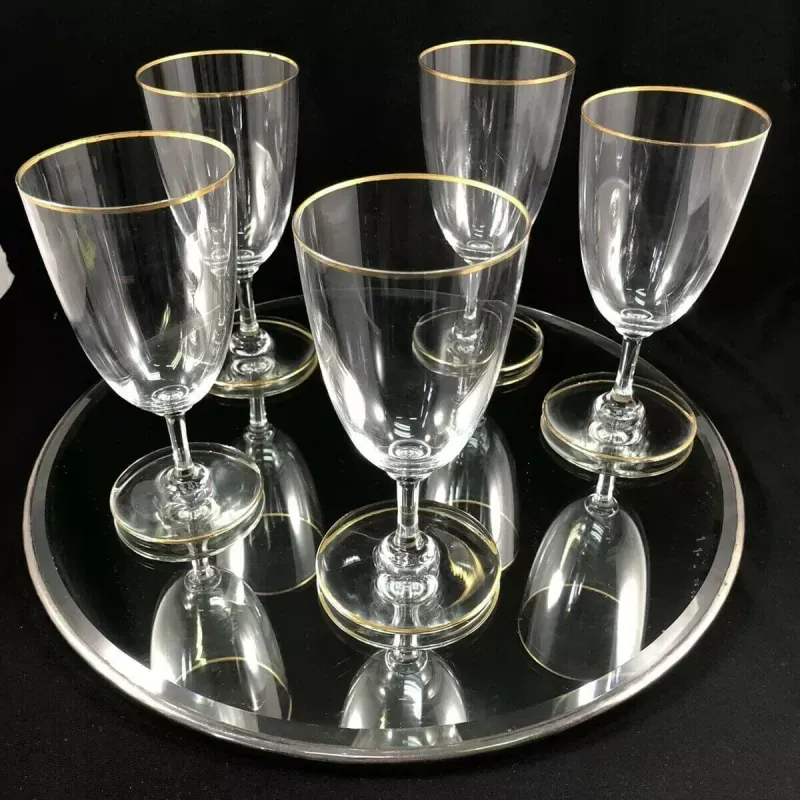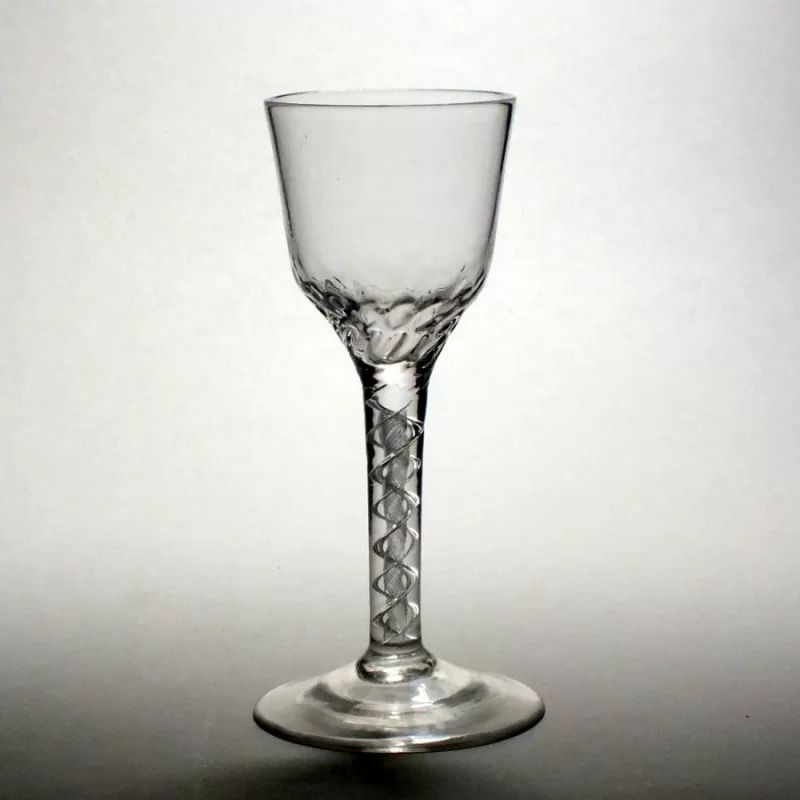How to Identify Antique Crystal Stemware
One important step in identifying and valuing your antique crystal stemware is learning how to identify the crystal manufacturer. Antique crystal has been treasured by owners and graced tables for more than 400 years and its story is just as sparkling today. Learn all about crystal stemware identification to find out where your piece came from.
Identifying Crystal Manufacturers
It is difficult to identify crystal stemware manufacturers who made glass between the 17th and 19th centuries. But by the 1820s, companies started to manufacture crystal stemware in large quantities with manufacturer marks. There are several methods for identifying crystal stemware, but they vary in accuracy. The best way is to first identify the pattern and the manufacturer.
Crystal Stemware Manufacturer Marks
You might not notice it at first, but most crystal stemware has some type of marking. A magnifying glass and holding the stemware up to light can help you spot the mark and read it.
- You could find the mark on the rim or center of the foot, on the stem, or on the bottom of the bowl.
- The mark could be an initial, a logo, a word, or coded numbers and letters.
- Some marks are molded or embossed, others are stamped or etched on the glass (Waterford, for example).
- You can make a rubbing of the mark by rubbing a pencil over a piece of thin paper placed on top of the mark to help you read it.
- The Great Glass website has U.S. and European stemware markings you can browse to identify yours.
- Inkspot Antiques has a list of online resources where you can identify the marks of different manufacturers.

Stemware Pattern Helps Identify Manufacturer'
Manufacturers often used unique patterns or identified their specific products with pattern names and numbers. If you can identify the pattern of your stemware, it can lead you to the manufacturer information.
- Pattern names or numbers could be etched on the stemware.
- If you can't find a pattern name or number, make note of details in the design pattern like a faceted stem.
- You can search online databases and collections to find features or patterns similar to yours to help narrow down the manufacturer.
- Replacements is the granddaddy of china and glassware warehouses, and it lists thousands of pieces of vintage and antique crystal stemware for sale. You can also take advantage of their free identification service.
Most Popular Crystal Stemware Manufacturers
Knowing what names to look for can help you pick out pieces that are high quality and collectible. Some of the best-known crystal companies of the 1700s and 1800s include:
- Baccarat has manufactured luxury crystal since 1822. Its marks include etchings, molded marks, and labels, so look carefully before you buy or sell your glass.

- Fostoria, in business 1887 to 1986, was among the premier crystal and glass companies and well known for depression glass and crystal. You can see many of their marks at the Glass Lovers Glass Database.
- Gorham was founded in Rhode Island in 1831, and although it established itself as a silverware company, it also produces china and stemware and is sought after by collectors. Pieces may be marked with labels or stamps.
- Heisey wasn't in business very long (1890s to 1950s) but the company was an important manufacturer of crystal. They used a diamond H mark, but it can be difficult to locate on stemware.
- Lenox was founded in 1889 and has a tradition of producing colorful crystal stemware for the table. They used printed marks and labels.
- Waterford has been in the business of making crystal and stemware since 1783. Look for their famous etched mark and labels.
The Basics of Antique Crystal Stemware
Identifying Crystal Stemware Versus Glass
If the manufacturer and pattern are unknown, try the following to see if what you have is crystal and not glass:
- Tap the glass (and try to be careful). Crystal will have a pleasant pinging noise, while glass will thunk.
- Hold the glass up to the light. Crystal may refract the light and create a prism effect of rainbows, while glass will not.
- Crystal will often feel heavier than glass, but despite this, the rims on stemware may be thinner.
- Bohemian crystal (often colored and enameled) has been reproduced in quantity, and a recent guide notes that glass cutters may leave an untreated cut in the piece (which will appear cloudy) so a buyer knows it's real.
- Goblets are not sherbet glasses, water and wine don't always mix. By identifying the shape you may be able to determine the glass's use which will help in identification.

Distinguishing Features of Crystal Stemware
- Baluster: This has a stem that gets thicker near the foot
- Bucket bowl: A wide-mouthed container.
- Air twist stems: These were designed to make the piece lighter and therefore be taxed less (glass was taxed by weight).
- Facet cuts: The flat sections cut away on the stems.
- Knopped (or knobbed) stems: These have bulbs or protuberances on the stems (and which made the glasses easier to hold).
Examples and Values of Antique Crystal Stemware
Antique examples (100+ years) of crystal stemware were made by many glass companies throughout the U.S. and Europe. The older, highly decorated examples can have values beginning at $1,000 and topping $4,000 or more per glass.
- The most famous crystal stemware may come from Waterford, with its sparkling crystal and rhythmic patterns
- The American brilliant period (1880s until World War I) was known for the "bright" crystal glass and elaborate cuts and decorations.
- Glass produced after World War I is considered vintage, and during the 20th century, antique crystal stemware was made by many companies, including Cambridge.
- 1stdibs carries moderately priced high-end pieces, including stemware. You can find complete sets here, like a Val St Lambert Pampre D'Or 23-piece wine crystal stemware set which was originally listed for $3,800.
- Antiques Atlas is the United Kingdom's online mall for antiques and collectibles where this pair of rummers was offered.

Caring for Antique Crystal
- Crystal is more porous than glass. Do not allow it to stand overnight with wine in the bottom of the glass, but rinse it immediately.
- Handwash with mild soap and never use the dishwasher.
- Keep a folded tea towel on the bottom of the sink when washing. This will protect the fragile crystal from chips, nicks and breakage.
- Rinse in water to which a little white vinegar has been added to give the crystal even more sparkle.
- Dry with a soft towel and put away immediately.
- Never put your crystal in a window or other place where extremes of temperature occur: crystal is strong, but constant expansion and contraction from heat and cold can crack the glass.





